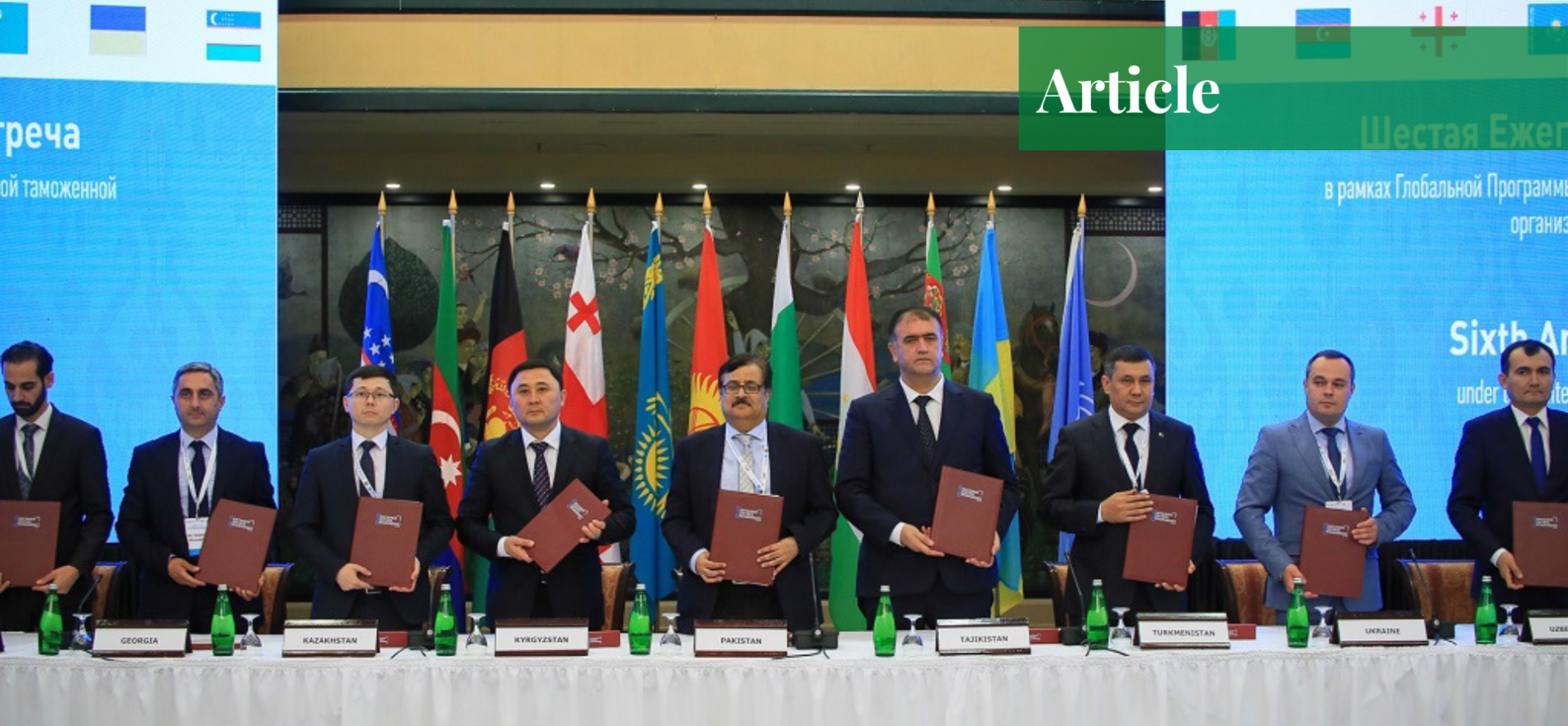Hajra Sajjad graduated from Quaid-i-Azam University with a master's degree in defence and strategic studies. Her areas of interest include international relations, peace and conflict studies, South Asian dynamics and security.
The Prospect of Regional Connectivity
By the end of World War II, a new era of globalization emerged in the western bloc, which strengthened after the dissolution of the Soviet Union in 1991. With the disintegration of the Soviet Union, five important landlocked hubs of hydrocarbons, jointly called Central Asian Republics (CARs), emerged in Eurasia.
The Eurasian region, known as the “World Island” in Sir Halford Mackinder’s theory of Heartland, holds great significance for regional integration and progress. It is the biggest landmass in the world, comprising 75 percent of the world’s population and about three-fourths of the world’s known energy resources.
Enhanced regional connectivity plays an important role in supporting economic growth and development. Trade, transport, movement of people, the flow of ideas, and many other aspects of political, cultural, economic, and strategic cooperation and integration can provide a sharp counterbalance to the overall slowdown of the global economy.
Just like Central Asia, South Asia is also very much amenable to regional integration, given its rich availability of human resources and services dynamism. Since, South Asia is facing multiple challenges such as poverty, lack of infrastructure, human development, etc., this makes the idea of regional connectivity with the Central Asian Republics, for enhanced sustainable development, even more favorable.
Geographical Importance of Pakistan for Central Asia
Pakistan is located in the “Heart of Asia” which includes Afghanistan and its extended neighborhood. Pakistan is connected with China, Tajikistan, and Afghanistan through the Karakorum Highway, while Karachi, Gwadar, and Pasni port are located approximately 1600 km from Central Asia.
Hence, Pakistan is at the crossroads of Central Asia, the Middle East, South Asia, and any collaborative efforts between these regions would have a direct impact on Pakistan’s prospective development. If such topographical features are utilized properly, they can open a sustainable channel towards economic growth and development for the entire region. Therefore, Central Asia always remains in the foreign policy concerns of Pakistan, as indicated from its energy sector cooperation with the Central Asian Republics.
While Pakistan is interested in cooperation with the Central Asian Republics to meet its energy needs and for trade prospects, there is no doubt that Pakistan is a gateway to Central Asia through the 350 km long Wakhan corridor and can play the role of a bridge between the two regions. The geostrategic location of Pakistan is in itself of utmost significance for Central Asia due to the latter’s landlocked topography. It needs Pakistan to conduct its transit trade towards South Asia and beyond.
For sustainable collective economic progress of both Central Asia and South Asia, it is very essential that there is an increased partnership between their member states through multiple bilateral or multilateral treaties. These treaties will ensure that the needs and interests of the partner states are fulfilled.
PM Khan’s three-day trip to Uzbekistan exhorted open export avenues for the purpose of Central Asian regional connectivity. Pakistan realizes that trade relations with the Central Asian states and peace in Afghanistan are very crucial for regional stability and development.
Countering India Through Regional Connectivity
Although Pakistan, Russia, China, India, and the Central Asian states (excluding Turkmenistan) are members of the Shanghai Cooperation Organization (SCO), the organization’s main concerns are security-related and its effectiveness can be questionable. While Russia holds great leverage in Central Asia due to its historical patronage, Pakistan does not enjoy a very amicable relationship with it due to the fact that it sided with the western bloc during the Cold War.
It was suspected that SCO membership could bring Pakistan and India closer together because the South Asian Association for Regional Cooperation (SAARC) failed to do. Regardless of this expectation, such a thing happened did not happen. Instead, Pakistan believes that deeper ties with Central Asia and Afghanistan would give it an edge against India. Moreover, stronger relations with the states of the region will also allow Pakistan to balance India in terms of trade with the Central Asian Republics.
Other SAARC members are already overshadowed by the Indian presence and its economic might. India never hesitates to meddle in the economic and political issues of its SAARC neighbors i.e. Nepal, Bhutan, Bangladesh, and Sri Lanka, and it also never diverts from its subversive activities in Pakistan and Afghanistan. Henceforth, the importance of Central and South Asia regional connectivity through the Pakistani gateway can never go unnoticed.
Enhancing Connectivity Through Trade and Security Cooperation
Pakistan and the Central Asian Republics are linked by several trade agreements and through security-related cooperation in order to collectively combat terrorism. The $8 billion Turkmenistan, Afghanistan, Pakistan, and India (TAPI) gas pipeline project, which will transport natural gas from Galkynysh gas fields to the respective partners once it becomes operational, would likely enhance the interdependence of these states and boost economic development. India may also refrain from subversive activities in Baluchistan amounting to the fact that it may disrupt its sound supply of gas.
CASA 1000 is another project under construction that would fill the energy sector gap between the two regions. It would transport hydroelectricity from Kyrgyzstan and Tajikistan to Afghanistan and Pakistan eventually. An intergovernmental council governs the project and many foreign patrons, including the World Bank, USAID, the Islamic Development Bank, the US Department of State, and many donor communities, are cooperating in this project.
The China-Pakistan Economic Corridor (CPEC) is a flagship project under the Belt and Road Initiative (BRI) whose main beneficiary is Pakistan. But this project has several regional benefits as it is termed as a game-changer by many western critics. Central Asian countries have shown resolute support to energy and infrastructure projects under CPEC as they will maximize exclusive regional connectivity, provided Pakistan ensures its stability and security. It will provide a gateway to Indian Ocean waters to China and the Central Asian states. Moreover, due to Gwadar Port’s proximity to the Strait of Hormuz and the Persian Gulf, it can become emblematic of a new Great Game.
China also believes that through such trade avenues and resources projects, it can eradicate the radical Islamist elements in the region by providing financial incentives to the general populace. The western governments might have termed it as a neo-colonial policy of China but there is no doubt that it has become one major player in the global political economy. As a matter of fact, CPEC is just there to improve the connections between Pakistan and CARs and boost regional connectivity.
Conclusion
The international political environment has shifted from a traditional to a non-traditional security paradigm. Since the regional security complex theory (RSCT) posits that security should be viewed from a regional perspective, it has become very crucial to enhance regional connectivity and harmony. Mobilization of people and the free flow of trade will bear a positive correlation with economic development and regional prosperity. However, there are still many gaps that need workable solutions.
There should be an international policy framework that would assist in the integration of the two regions by focusing more on import and exports accretions and investment. A program similar to the UN-sponsored Special Programme for the Economies of Central Asia (SPECA), but with optimum effectiveness, is required for both regions’ connectivity. The more states are dependent on each other for their prosperity, the less will be a likelihood of conflicts existing between even the rival states. Pakistan would always play its inevitable role for this purpose since it has a lot to gain from this crossroad situation if handled safely and efficiently.
If you want to submit your articles and/or research papers, please check the Submissions page.
The views and opinions expressed in this article/paper are the author’s own and do not necessarily reflect the editorial position of Paradigm Shift.



















